Kitchen Guy: BBQ!
Summer 2013 Recipe
In 2005, Jim gray was named montana's chef of the year!
When summer evenings are nice and hot,
The thing to do is find a spot,
Where a barbecue can be set up,
So everyone can come and sup...
As an officially certified judge, trained by the cognoscenti of the Pacific Northwest Professional Barbecue Association, I attest that the opening lines of Ms. Northover’s paean to barbecue capture the feelings of most Montanans when it comes to using the grill, er barbecue, as is said in these here parts.
Fortunately for us “Q” devotees in Montana, a growing number of ranchers raise all variety of stock and poultry and offer their expertly finished meats for us to grill in increasing number of farmers’ markets across the state.
Game meats like elk, deer and antelope generally are too lean and don’t really have the structure — or fat content —- to stand up to the long, slow cooking necessary to achieve true barbecue. Those meats are likely to turn into something resembling jerky after spending the time true barbecue requires. I don’t recommend it.
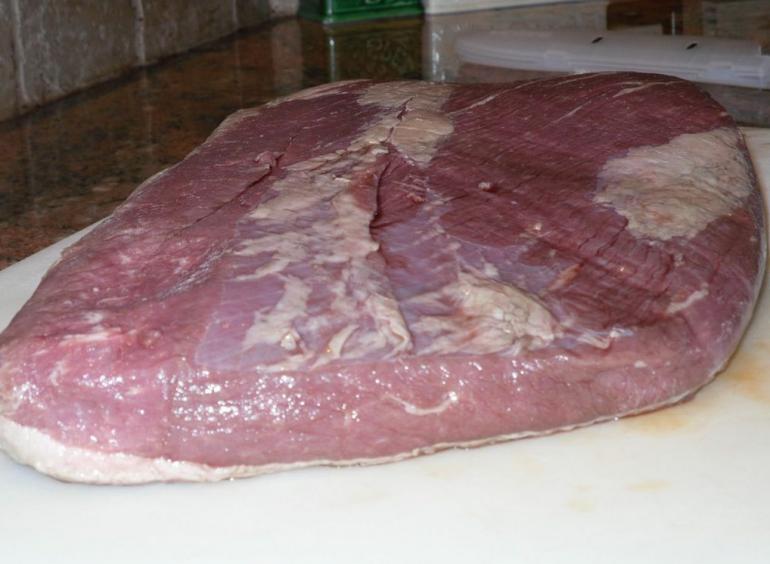
In the world of barbecue, pork presents us with the greatest number of options. The process of slow cooking or slow roasting meat for many hours in a closed, low-heat environment has been raised to high art by four-star chefs and backyard cooks alike the world over. Fear not and do not be deterred!
I’m here to help:
The technique of barbecue refers not only to the cooking method, but also to the preparation of the meat to be cooked. That’s the rub. And, while most will agree on the cooking method, there is no shortage of opinion on the subject of rubs — that combination of herbs, spices and other ingredients placed on the surface of the meat before it ever reaches the cooking vessel.

Here’s a basic and versatile dry rub for brisket, chicken and pork:
- ¼ cup kosher (coarse) salt
- 1 Tbsp. ground black pepper
- 1 Tbsp. smoked paprika
- 2 tsp. cayenne pepper
- 2 tsp. dried oregano
- 2 tsp. garlic powder
- 1 tsp. ground cumin
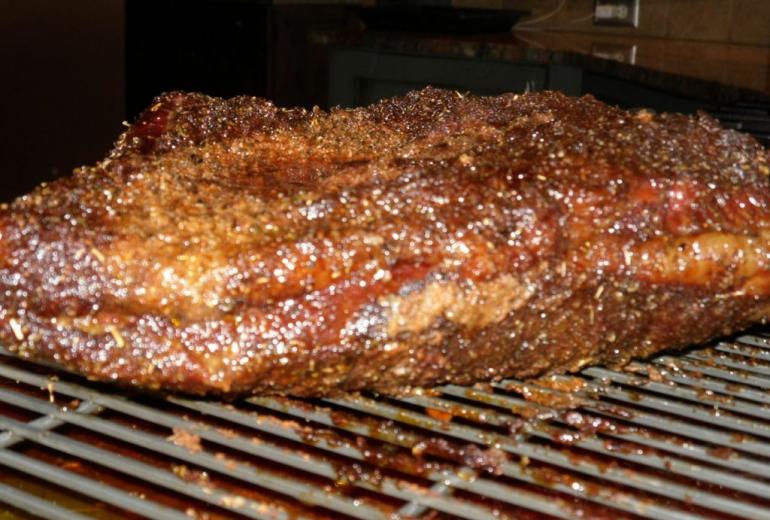
Mix everything together and apply all over the meat and place on rack on a rimmed baking
sheet, lined with foil, and cover with plastic wrap or foil and refrigerate at least 4 to 6 hours.
Wet rubs frequently start with brown sugar, Worcestershire sauce, honey, beer or whiskey and then they get the additions of some or all of the ingredients of the dry rub.
Here’s a basic wet rub recipe:
- 3 Tbsp. packed dark brown sugar
- 2 Tbsp. sweet paprika
- 1 Tbsp. cayenne pepper
- 1 Tbsp. kosher salt
- 1 Tbsp. onion powder
- 1 Tbsp. freshly ground black pepper
- 1 Tbsp. cumin
- ½ tsp garlic powder
- 4 Tbsp. Worcestershire sauce
- 1 Tbsp. Tabasco sauce
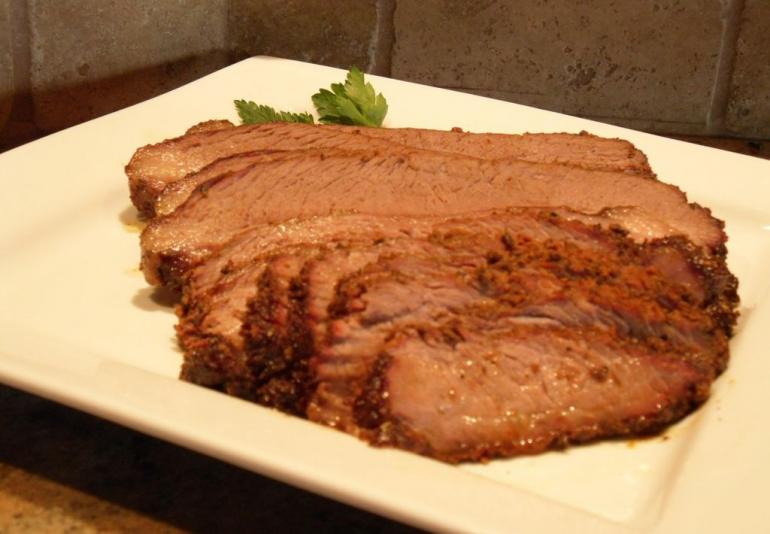
Optional liquids include honey, distilled spirits (like bourbon) and molasses, among others.
Combine everything, adjusting the amount of Worcestershire and Tabasco sauces (or other liquids you’re using) to achieve the consistency (and spice level) of a paste. Massage the paste into the meat, place on rack on a rimmed baking sheet lined with foil and let marinate, covered, in the refrigerator for at least six hours or overnight.
Soak about four or five ounces of wood chips for at least an hour — choose your flavor. I like hickory or apple wood.
Get your grill heated. If it’s charcoal, wait until the briquettes are covered with ash and move them to one side of the grill. If you’re using gas, heat only one set of burners on high, then turn the burner all the way down to the lowest setting. The art of successful barbecue can be distilled into one phrase: Low and slow — a reference to the heat — under 250 degrees Fahrenheit and anywhere from three to six hours, and sometimes even longer.
For either dry or wet rubs, uncover the meat after marinating, lift the meat from the rack,
remove the foil lining the bottom and spread the soaked wood chips on the bottom of the rimmed sheet. Place the rack back on the sheet, replace the meat and cover tightly with aluminum foil.
Place the baking sheet on the “cool” side of the grill — off the heat. Cover and cook for five to six hours. No peeking!
1. Raw brisket, 5.75 lbs.; 2. Dry rubbed brisket on rack over rimmed tray.; 3. After 6 hrs at 250, brisket is finished; 4. Sliced barbecued brisket.








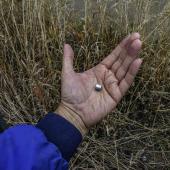
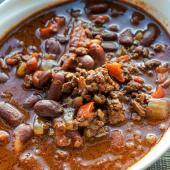
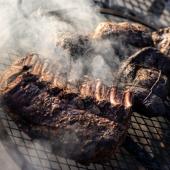

Leave a Comment Here